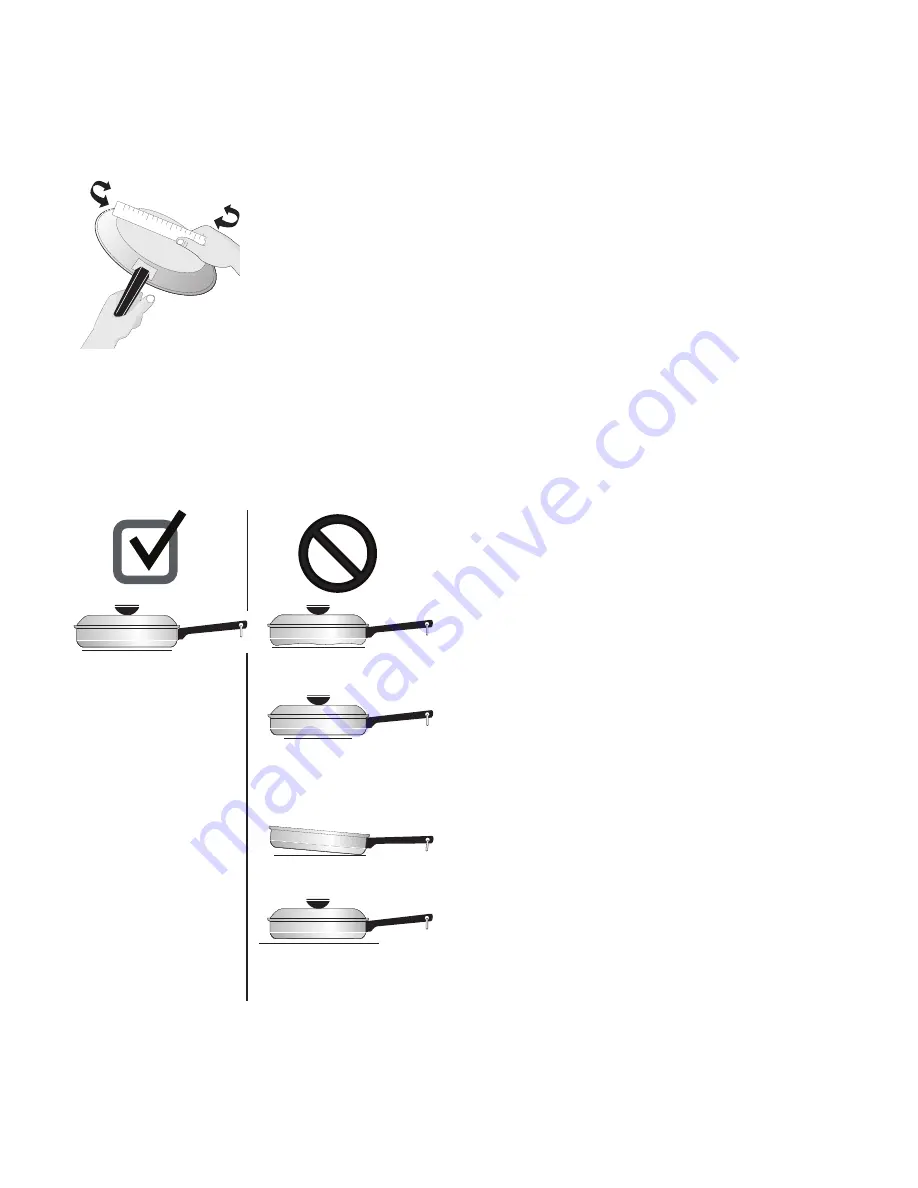
8
Before Setting Surface Controls
Using proper cookware
Check for flatness by rotating a ruler across the bottom of the
cookware (
). Cookware should have flat bottoms that
make good contact with the entire surface heating element
(
). For detailed information about the ceramic cooktop,
refer to
on
Cookware Material Types
The cookware material determines how evenly and quickly heat
is transferred from the surface element to the pan bottom. The
most popular materials available are:
Aluminum - Excellent heat conductor. Some types of food will
cause it to darken (Anodized aluminum cookware resists staining
and pitting). If aluminum pans slide across the ceramic cooktop,
they may leave metal marks which will resemble scratches.
Remove these marks immediately.
Copper - Excellent heat conductor but discolors easily (See
Aluminum).
Stainless - Slow heat conductor with uneven cooking results. Is
durable, easy to clean and resists staining.
Cast Iron - A slow heat conductor however will retain heat very
well. Cooks evenly once cooking temperature is reached. Not
recommended for use on ceramic cooktops.
Porcelain-enamel on metal - Heating characteristics will vary
depending on base material. Porcelain-enamel coating must be
smooth to avoid scratching ceramic cooktops.
Glass - Slow heat conductor. Not recommended for ceramic
cooktop surfaces because it may scratch the glass.
Important note:
Do not place empty aluminum, glass or porcelain-enamel
coated cookware on the ceramic cooktop! The melting point of
cookware made with these materials may be reached quickly
especially if left empty, and they may bond to the ceramic
cooktop. If the cookware melts it will damage the cooktop! Be
sure to follow all the cookware manufacturer’s suggestions when
using any type of cookware on the ceramic cooktop.
About the Ceramic Glass Cooktop
The ceramic cooktop has radiant surface elements located
below the surface of the glass. The design of the ceramic
cooktop outlines the area of the surface element underneath. Be
sure to match the pan size with the diameter of the element
outline on the cooktop and only flat-bottomed cookware should
be used.
The type and size of cookware, the number of surface elements
in use and their settings are all factors that will affect the
amount of heat that will spread to areas beyond the surface
elements. The areas surrounding the elements may become hot
enough to cause burns.
The size and type of cookware
used will influence the radiant ele-
ment power level setting needed
for best cooking results. Be sure to
follow the recommendations for
using proper cookware as illus-
trated in both
.
Figure 2: Testing cookware
Figure 3: Proper cookware placement
• Flat bottom and straight
sides.
• Tight fitting lids.
• Weight of handle does
not tilt pan. Pan is well
balanced
.
• Pan sizes match the
amount of food to be
prepared and the size
of the surface element.
• Made of material that
conducts heat well.
• Easy to clean.
• Always match pot
diameter to element
size.
• Curved and warped pans.
• Cookware larger than
cooking area marked on
cooktop by more than
one-half inch or 12mm.
• Heavy handle tilts pan.
• Pan is smaller than the
heating area marked on
cooktop.
Summary of Contents for 790.9258
Page 45: ......









































